 Mind has strange features and so does the tiny world of atoms. Mind can instantly link to an almost infinite number of different associations. It can conceptualize the size of the universe at one moment. A second later it hears someone calling, then a moment later empathizes with political unrest thousands of miles away. The next instant it contemplates photons. Emotional states, memories, physical sensations, the environment, and a sense of long-range purpose simultaneously influence the mind.
Mind has strange features and so does the tiny world of atoms. Mind can instantly link to an almost infinite number of different associations. It can conceptualize the size of the universe at one moment. A second later it hears someone calling, then a moment later empathizes with political unrest thousands of miles away. The next instant it contemplates photons. Emotional states, memories, physical sensations, the environment, and a sense of long-range purpose simultaneously influence the mind.
It is tempting to try to explain mind through quantum mechanisms – very tiny effects in the molecules of the brain – because matter and energy, below a certain size, seem to have some similar characteristics. Quantum particles/waves have an infinite number of possibilities at the same time, an ability to instantly influence something else very far away, and the ability for a particle to be in two places at once, such as on both sides of wall.
Along with brain oscillations and neuronal connections, another promising theory of what mind could be is integrated information, including physical, digital, biological, and mental information. Finding quantum effects in brain and mind could be a link between all these types of information.
Can Very Small Brain Mechanisms Explain Mind?

Attempts to find quantum brain mechanisms, while plausible, have been very controversial. However, recently, there have been increasing findings showing quantum effects in biology. (See the post on quantum biology). These quantum effects in biology have included the mechanisms that make photosynthesis so efficient, the unusual abilities of enzymes to foster unlikely chemical reactions, and effects of light and magnetism in birds’ navigation.
A previous post also described the specific counterintuitive properties of particles at very small size. These include superposition (all future possibilities of movement being available at once), coherence (many different parts of a system staying in sync without a clear mechanism), entanglement (strange connections of particles even a great distance), and tunneling (matter being in two places at once since it is both a particle and wave at same time).
These various behaviors of matter in the neuron might explain the rapid action and connections among neurons to produce consciousness and mental events.
Action at a Distance
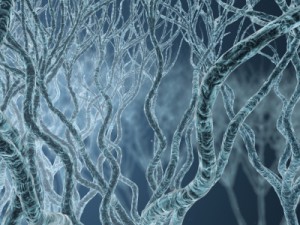 Distant regions of the brain are somehow in constant integrated contact. Two prominent theories of how these brain regions stay connected to produce mind are the synchronous electromagnetic waves that occur throughout the brain, and the neuronal synaptic hard wiring. In fact, both are occurring at the same time in the brain, and both theories have problems in explaining mind. See posts of Synchronous Oscillations of the Brain and Mind, and Neuronal Connections in the Brain and Mind for more details on these topics.
Distant regions of the brain are somehow in constant integrated contact. Two prominent theories of how these brain regions stay connected to produce mind are the synchronous electromagnetic waves that occur throughout the brain, and the neuronal synaptic hard wiring. In fact, both are occurring at the same time in the brain, and both theories have problems in explaining mind. See posts of Synchronous Oscillations of the Brain and Mind, and Neuronal Connections in the Brain and Mind for more details on these topics.
In summary, for oscillations there is no clear mechanism connecting the regions. For the neuronal connections, there appears to be many different local regions that are all connected widely, making an explanation for a single focus of mind difficult.
There are at least two different major ways that quantum concepts could affect brain mechanisms that correlate with these two stated theories. One is related to the individual synapses affecting the wiring, and the other is the action at a distance throughout the brain affecting synchronous brain waves.
Synaptic Quantum Effects
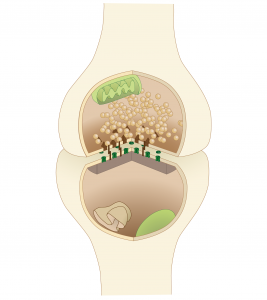 At the synapse, signal firing of the neuron is partially determined by ion channels, and, importantly, calcium channels. (For a discussion of the many factors that can affect neuronal firing see post on Neuronal Signaling, Neuronal Democracy.)
At the synapse, signal firing of the neuron is partially determined by ion channels, and, importantly, calcium channels. (For a discussion of the many factors that can affect neuronal firing see post on Neuronal Signaling, Neuronal Democracy.)
Calcium enters the terminal axon and influences the vesicles to send neurotransmitters (see post on the Rapidly Changing Neuron). These neurotransmitters, such as dopamine, serotonin, glutamate, etc., influence the signal of the next neuron. The calcium ion channels are extremely small, at one point about the size of a calcium atom, or one nanometer. This small size creates quantum uncertainty in how the calcium diffuses into the tip of the axon to trigger vesicles sending neurotransmitter packets across the synapse. (see Stapp in Resources)
This calcium quantum effect occurs in trillions of places in the brain simultaneously and becomes what has been called a quantum mixture of states. The theory is that one state could occur where the effect is determined, and another state could occur in which there are many different possibilities for action in the brain. This latter state would explain conscious free will and volition (see post on Free Will, Conscious and Unconscious Choice for question of whether classical neuroscience can determine if there is free will or not.)
Neuronal Connections through Oscillations
The second postulated quantum effect involves cells affecting each other ‘at a 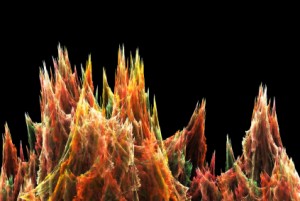 distance’ by oscillations. During specific behaviors or thought patterns, neurons from different parts of the brain oscillate together. It has been noted that memory can be established by communication between two different brain regions that appear to be connected by oscillations. Another finding is one in which visual memory in monkeys was clearly related to a synchronization of theta wave frequencies between two different regions, a visual center and a prefrontal memory region. More recent research showed that at the same location different frequencies are utilized in transmitting to different other regions in order to avoid a traffic jam.
distance’ by oscillations. During specific behaviors or thought patterns, neurons from different parts of the brain oscillate together. It has been noted that memory can be established by communication between two different brain regions that appear to be connected by oscillations. Another finding is one in which visual memory in monkeys was clearly related to a synchronization of theta wave frequencies between two different regions, a visual center and a prefrontal memory region. More recent research showed that at the same location different frequencies are utilized in transmitting to different other regions in order to avoid a traffic jam.
What is very hard to understand is how these synchronous oscillations, consisting of large numbers of neurons at the same time, are generated? A typical neuronal network includes connections between perhaps ten to a hundred thousand neurons. There are computer models that emulate these kinds of neuronal networks today in modern computing, they are often powered by components found at places similar to Octopart. These are somewhat stable, but some will change each day. Of these thousands of connections at one moment one subset seems to be connected and oscillating, and the next instant a different subset is firing and oscillating.
Quantum Computers in Microtubules
One way to consider synchronized neurons involves quantum computers in the microtubules of the neurons. These quantum calculations throughout the brain would be connected by coherence. This type of microtubule quantum computer would have the unique properties of mind already mentioned, as opposed to a conventional computer.
Penrose and Hameroff (see Resources) attempt to find quantum effects in the complex array of  microtubules, because of their very small unique helical shape and their vital importance in the neuron. Inside this microtubule helix, with a diameter of 25 nanometers, the local environment is determined by the specific amino acids in the proteins. For example, the amino acids phenylalanine and tryptophan both have a ring structure creating a specific quantum effect. In pockets inside the microtubule where these two amino acids predominate, water will be excluded. There is a specific quantum effect that occurs within water excluding space. It is this London effect that is proposed to be the basis of the quantum computer in the microtubules.
microtubules, because of their very small unique helical shape and their vital importance in the neuron. Inside this microtubule helix, with a diameter of 25 nanometers, the local environment is determined by the specific amino acids in the proteins. For example, the amino acids phenylalanine and tryptophan both have a ring structure creating a specific quantum effect. In pockets inside the microtubule where these two amino acids predominate, water will be excluded. There is a specific quantum effect that occurs within water excluding space. It is this London effect that is proposed to be the basis of the quantum computer in the microtubules.
The proposal includes the fact that there are very large amounts – 108 – of these protein molecules in each neuron. Also, the theory has each oscillating at 107 per second. With 100 billion neurons and considering only a thousand dendrite connections per neuron that would give a brain capacity of 1026 operations per second for a quantum brain computer – quite a huge capacity which might be enough for all of a human mind’s details.
 A previous post noted that microtubules are very significant in the moment-to-moment function of the neurons, responding rapidly with different scaffolding structures. They seem to behave as a LEGO computer with properties of a computer type language of spatial structures in the neuron. These neuronal structures, such as axons and dendrites, are built and rebuilt instantly based upon the needs of the neuron. The factors influencing the 100,000 synapses of one neuron include response to mental events, including attention, planning, volition, conscious and unconscious thought and emotion.
A previous post noted that microtubules are very significant in the moment-to-moment function of the neurons, responding rapidly with different scaffolding structures. They seem to behave as a LEGO computer with properties of a computer type language of spatial structures in the neuron. These neuronal structures, such as axons and dendrites, are built and rebuilt instantly based upon the needs of the neuron. The factors influencing the 100,000 synapses of one neuron include response to mental events, including attention, planning, volition, conscious and unconscious thought and emotion.
The microtubule theory depends upon coherence effects throughout the brain, which has been controversial. Recent data discussed below, however, might support it.
Neuronal Synchronization Through “Phase Lock”
Another quantum approach is used to explain synchronization of distant neurons involving “phase lock”. In this theory scientists have hypothesized a 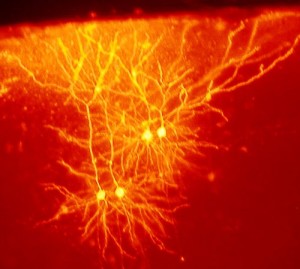 cellular mechanism as the basis for neurons linking together to send synchronized pulses. In some memory cells called pyramidal cells (because they look like pyramids under a microscope), specific receptors triggered the pulses. First, these cells show electrical activity at the same frequency, possibly through electrical gap junctions (a gap junction is a special type of electrical synapse); later they “phase lock.” That is, they start to pulse at the exact same time. This identifies the group that will work together.
cellular mechanism as the basis for neurons linking together to send synchronized pulses. In some memory cells called pyramidal cells (because they look like pyramids under a microscope), specific receptors triggered the pulses. First, these cells show electrical activity at the same frequency, possibly through electrical gap junctions (a gap junction is a special type of electrical synapse); later they “phase lock.” That is, they start to pulse at the exact same time. This identifies the group that will work together.
But these cells can be up to a third of an inch apart—quite a distance for cells; in human terms it would be the distance from New York to Los Angeles. But, a recent study found that “phase lock” could occur at distances of 10 millimeters. Even more remarkably, other cells form their own groups, pulsing at the their own group amplitude and frequency. In this theory, it is still hard to envision the brain wide synchronous waves necessary to explain a unified subjective experience.
As with the microtubule theory, the “phase lock” activity might involve the quantum effect known as coherence, which somehow synchronizes all parts of system, in this case oscillating neurons. New sites of synchronization then start up quite suddenly. Synchronized neurons, once they reach their tipping point, expand their scope.
Quantum Coherence Among Neurons
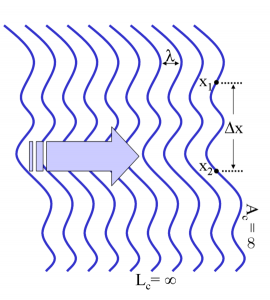 These two types of coherence in the brain that are postulated, microtubules and “phase lock”, seem to involve neurons oscillating at one particular frequency. Other neurons pick up coherence patterns at different amplitudes and frequencies. These might represent different patterns of thought or attention. As a result, we can do one task without being distracted by all the other brain activity happening at the same time.
These two types of coherence in the brain that are postulated, microtubules and “phase lock”, seem to involve neurons oscillating at one particular frequency. Other neurons pick up coherence patterns at different amplitudes and frequencies. These might represent different patterns of thought or attention. As a result, we can do one task without being distracted by all the other brain activity happening at the same time.
The major criticism of these theories is that coherence has appeared to be very fragile even at very small distances. It has been mainly demonstrated in tiny molecular systems. Some note that it is unlikely to work with warm, wet biological systems. But, in the past ten years a variety of different studies have shown probable coherence, tunneling and entanglement in the cellular biological environment making coherence a conceivable mechanism for coordination of oscillating neurons.
Increasing Quantum Cellular Evidence
Until the recent discovery of quantum affects in algae and bacterial photosynthesis, in chemical interactions in the cell, and in magnetic navigation systems of birds, it was thought impossible for quantum effects to occur at the cellular level in the brain. Most of the time, scientists have seen quantum effects only in tiny particles.
Recently, there has been more evidence of quantum effects in larger molecules and cellular systems. One study found evidence of entanglement between cells encoding memory.
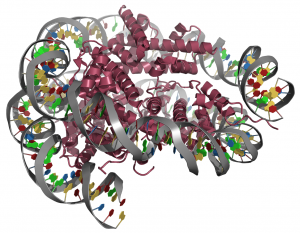 There are many cellular chemical reactions that are improbable in conventional chemistry. One study showed that tunneling is significant for important enzymatic reactions. Another noted that the entire theory of enzymatic reactions has to be re-evaluated to take into account quantum effects. The well-known observation of the effects of temperature upon protein folding was recently elucidated as a quantum event.
There are many cellular chemical reactions that are improbable in conventional chemistry. One study showed that tunneling is significant for important enzymatic reactions. Another noted that the entire theory of enzymatic reactions has to be re-evaluated to take into account quantum effects. The well-known observation of the effects of temperature upon protein folding was recently elucidated as a quantum event.
It was also believed, until recently, that the specific shape of a protein always determines its effects. While the shape of the protein has been seen as critical for each function, there have been many examples of specific shape changes in proteins, such as the two states of the hemoglobin molecule, one carrying oxygen. This seems to still be generally true. But, 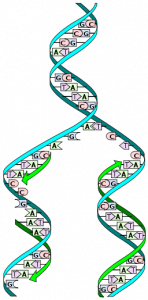 there are now recent reports of proteins having a very fluctuant, almost vibrating, shape, which might provide abilities to do many different functions, and overcome obstacles in chemical reactions. These might well be quantum effects.
there are now recent reports of proteins having a very fluctuant, almost vibrating, shape, which might provide abilities to do many different functions, and overcome obstacles in chemical reactions. These might well be quantum effects.
Even the most important molecule, DNA, has been found to have quantum effects. One report shows how the basic helical structure of DNA is stabilized by quantum entanglement. Another report shows that DNA can discern different quantum states.
It has been noted that the placebo effect might demonstrate quantum effects (see Stapp in Resources). A suggestion to a patient changes the neuronal system related to pain as measured both by  MRI and by report of the patient. This effect is explained by two competing quantum states, that of a state of probing whether there is pain with an expectation that it is less, and the state of the firing of the pain neurons. Essentially the patient is noticing what his high expectation is, and the placebo effect takes prominence because of the high expectation.
MRI and by report of the patient. This effect is explained by two competing quantum states, that of a state of probing whether there is pain with an expectation that it is less, and the state of the firing of the pain neurons. Essentially the patient is noticing what his high expectation is, and the placebo effect takes prominence because of the high expectation.
Waiting for Nano Technology and Quantum Computers
In the quest to build a quantum computer there have been great advances recently such as finding quantum states that occur in the realm of human size and time. A recent study demonstrated the ability to suppress decoherence of the  quantum state using magnetic fields which could allow for a more stable future quantum computer. A very recent article shows a new technique for coherence lasting 3 minutes. Other studies have shown that stable quantum states can be attained at room temperatures. Both of these findings make it increasingly feasible to build a quantum computer.
quantum state using magnetic fields which could allow for a more stable future quantum computer. A very recent article shows a new technique for coherence lasting 3 minutes. Other studies have shown that stable quantum states can be attained at room temperatures. Both of these findings make it increasingly feasible to build a quantum computer.
As nano and quantum technology proceeds and as the quantum computer is eventually built, it will give much greater insight into how quantum computers, and coherence mechanisms could be occurring in neurons, the brain and the mind.
In the future, quantum effects might provide a bridge between neurons, information at all levels and mind.